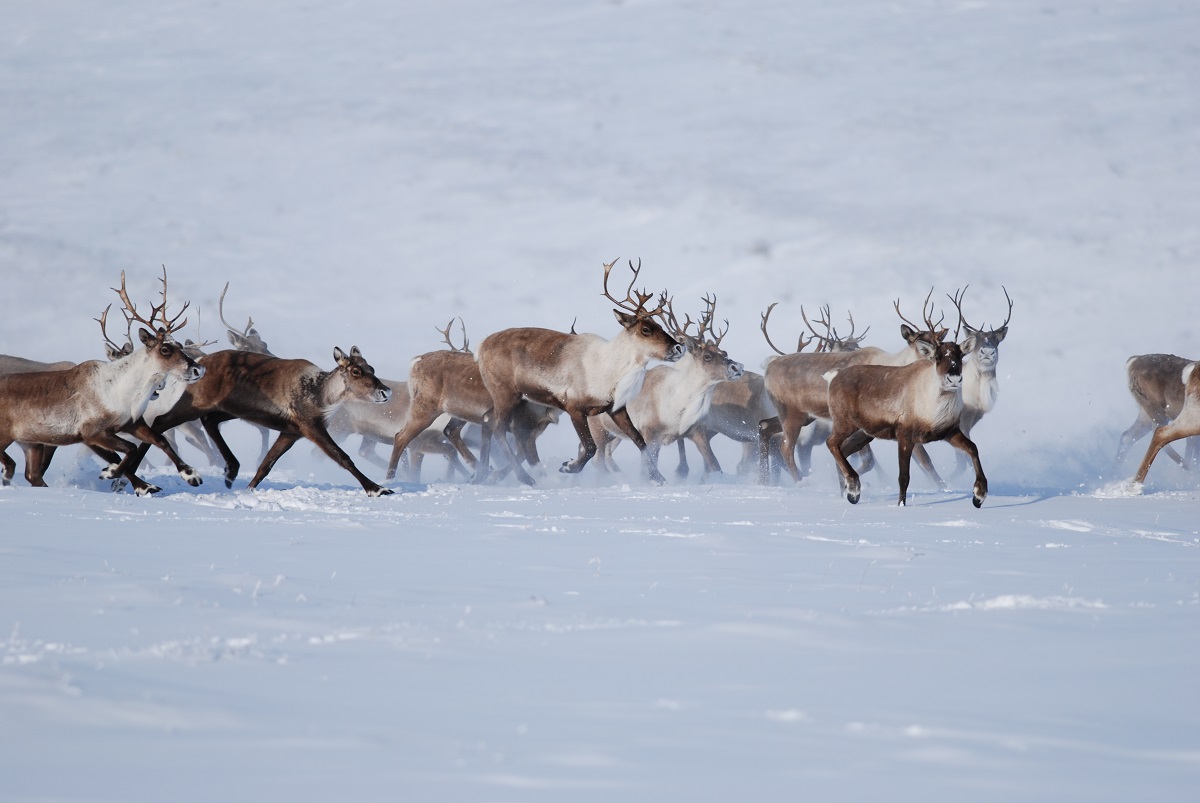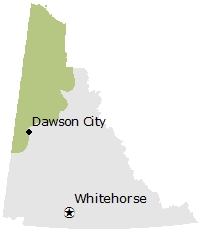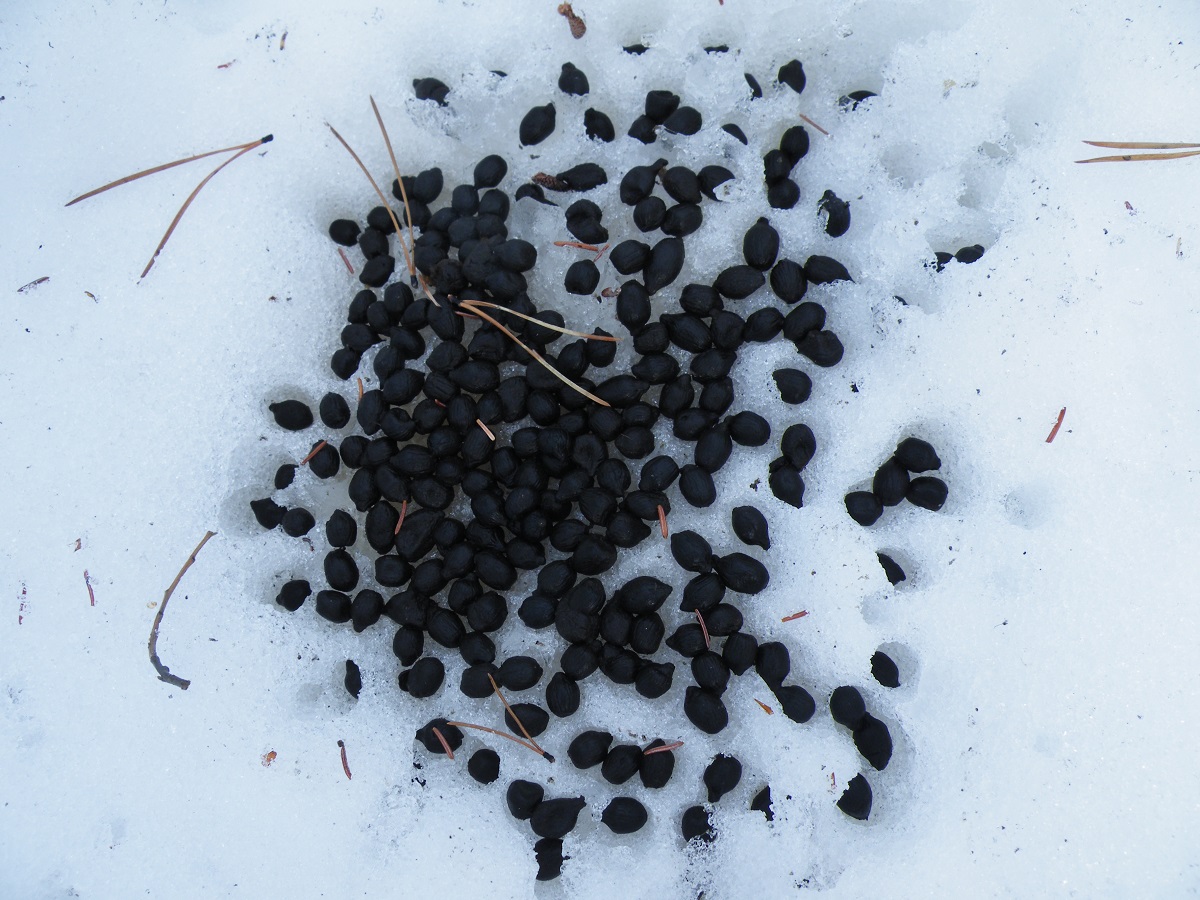
Name
- Common name: Barren-ground Caribou
- Scientific name: Rangifer tarandus grantii
- Order: Artiodactyla
- Family: Cervidae
Also known as
Reindeer, Tuktu, R. tarandus groenlandicus
Viewing opportunities
- Lucky travellers along the Dempster Highway in winter may see some Porcupine Caribou.
- River travellers may see large numbers of Porcupine caribou crossing the Firth River in July or Porcupine River in September.
Description
- Dirty brown fur fading to tan to off-white around the neck.
- Face darker than rest of the body with a white muzzle.
- White ‘socks’ above the hooves and white tail.
- Male antlers have one long curved branch with tines clustered at the top and a ‘shovel’ branching over the forehead.
- Females also have antlers that are much smaller and not as elaborate.
- Slightly smaller than Woodland Caribou.
Fast facts
- Height: 120 cm
- Weight: 120 kg
- Lifespan: 6 to 10 years
- Predators: Wolves, Grizzly Bears, Golden Eagles
- Habitat: Arctic Tundra
Conservation status
- Yukon: S3S4 (Vulnerable/Apparently Secure)
- Global: G5T4(Secure/Sub-species Apparently Secure)
Yukon population estimate
165,000 to 220,000
Behaviour
Barren-ground Caribou are herd animals and can be found in the Yukon in the massive Porcupine Herd (169,000) or the smaller Forty Mile Herd (51,000). The open tundra and sparse trees allow the herds to see predators from a great distance. Large herds will move together between calving grounds and summer feeding, to wintering grounds to the south. Cows will keep antlers until they calve in June allowing pregnant females to claim and defend the best feeding areas in late winter when they need high quality food.
Diet
Lichen, forbs, grasses, sedges, willows and mushrooms.
Distribution

See a map of the ranges of 24 caribou herds in the Yukon.
Sights and sounds


Caribou and people
- To hunt caribou, native peoples built fences with poles and brush, as long as 1.5 kilometres with numerous openings with snares. Caribou were chased into the fence where hunters waited with bows and arrows or spears.
- All parts of the caribou were traditionally used including the bones for utensils, sinews for thread and fat to produce light and heat.
- The Forty Mile Herd also known as “The Goldrush Herd” fed many gold seekers along the Yukon River from Whitehorse to the Klondike and beyond to Fairbanks, Alaska. It was one of the largest caribou herds and also became one of the most exploited.
- The Porcupine Caribou Management Board includes government agencies and user communities in the Yukon and NWT in the joint management of that herd.
Reports
- Range Assessment As a Cumulative Effects Management Tool: A Recommended Approach for Environment Yukon (2013)
- Three Decades of Caribou Recovery Programs in Yukon: A Paradigm Shift in Wildlife Management (2009)
Forty Mile Caribou Herd:
Porcupine Caribou Herd:
For questions about caribou, email the ungulate biologist (caribou) at kelsey.russell@yukon.ca or phone: 867-667-5465 or toll free in the Yukon: 1-800-661-0408, ext. 5465.